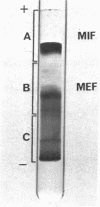Abstract
Production of human migration inhibitory factor by lymphocytes exposed to antigen was studied at intervals over a 7-day period. Migration inhibitory factor was measured by an agarose gel method, with buffycoat leukocytes as indicator cells. Lymphocyte supernatants from 7-day cultures consistently showed migration inhibitory factor activity; by contrast, enhancement of migration was frequently noted when effector cells were exposed to supernatants from 2- to 5-day cultures. Enhancement activity was manifested either by enhanced migration or by a sequential reduction in inhibitory activity consistent with a factor opposing the action of migration inhibitory factor. When supernatants were subjected to polyacrylamide gel electrophoresis, enhancement activity was regularly found in the beta-globulin region and migration inhibitory factor in the albumin fraction of the gel. The enhancement activity was heat-stable and nondialyzable. These findings characterize a hitherto unreported lymphokine, migration enhancement factor.
Keywords: lymphocytes, migration inhibitory factor
Full text
PDF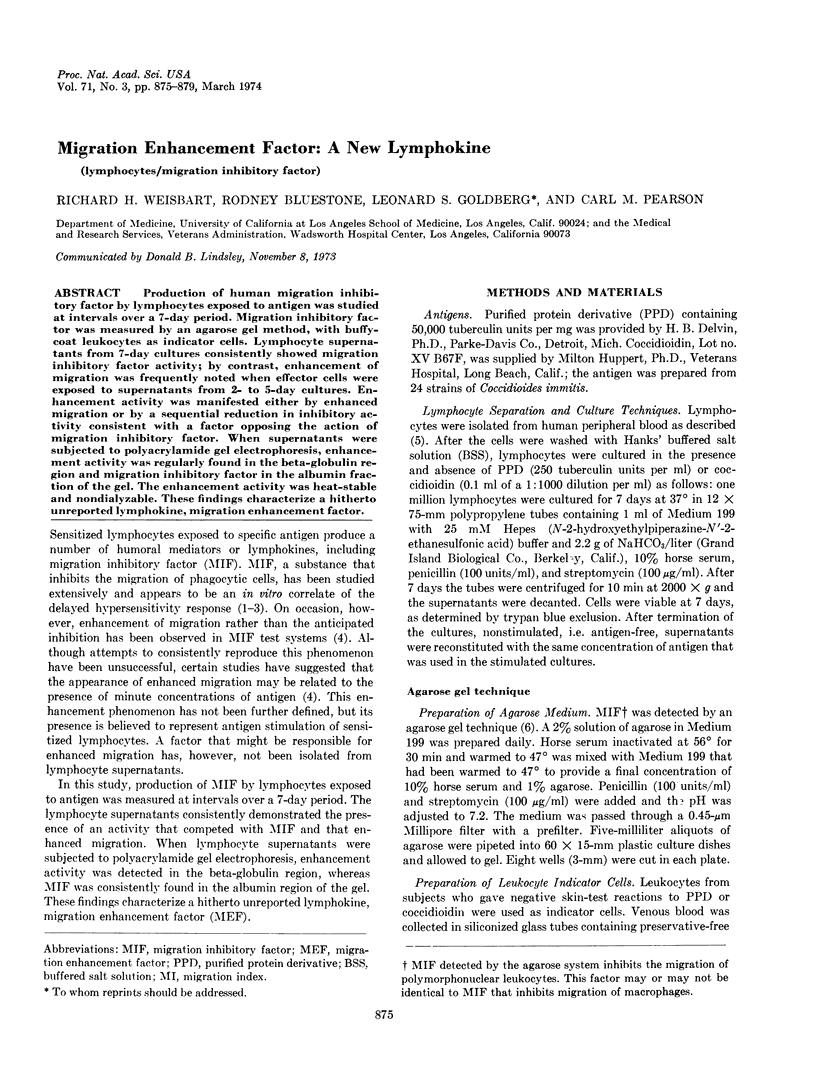
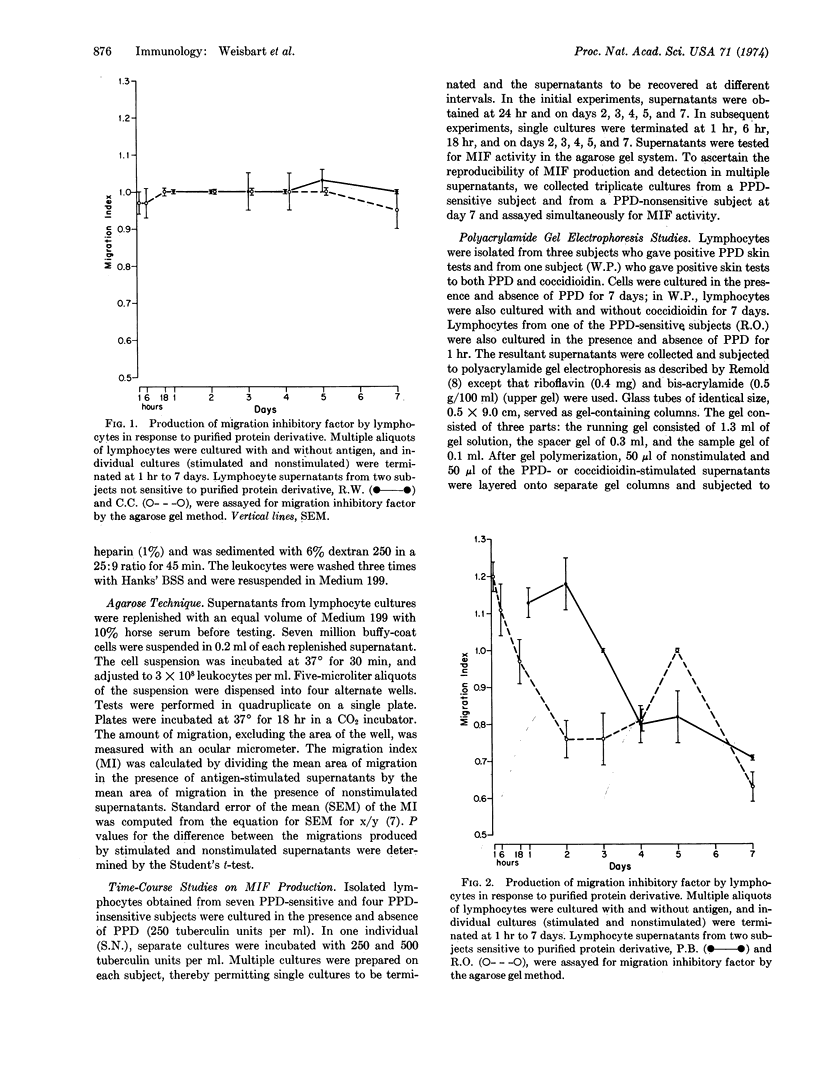
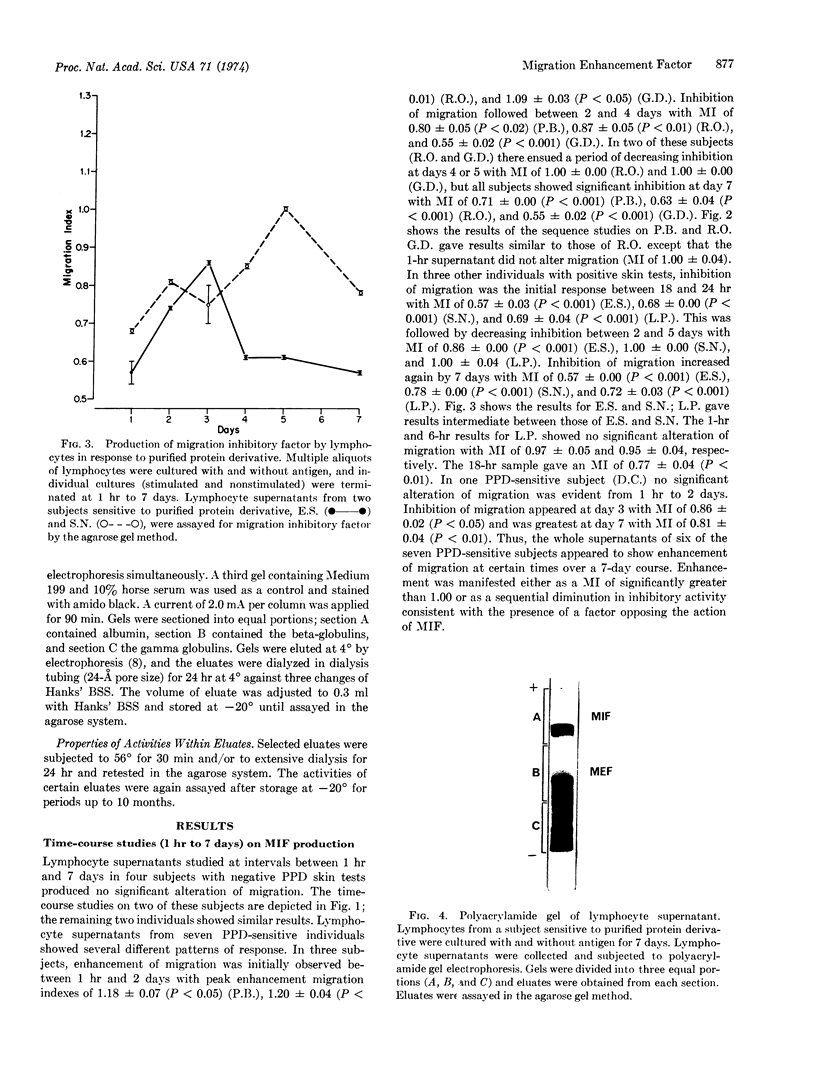
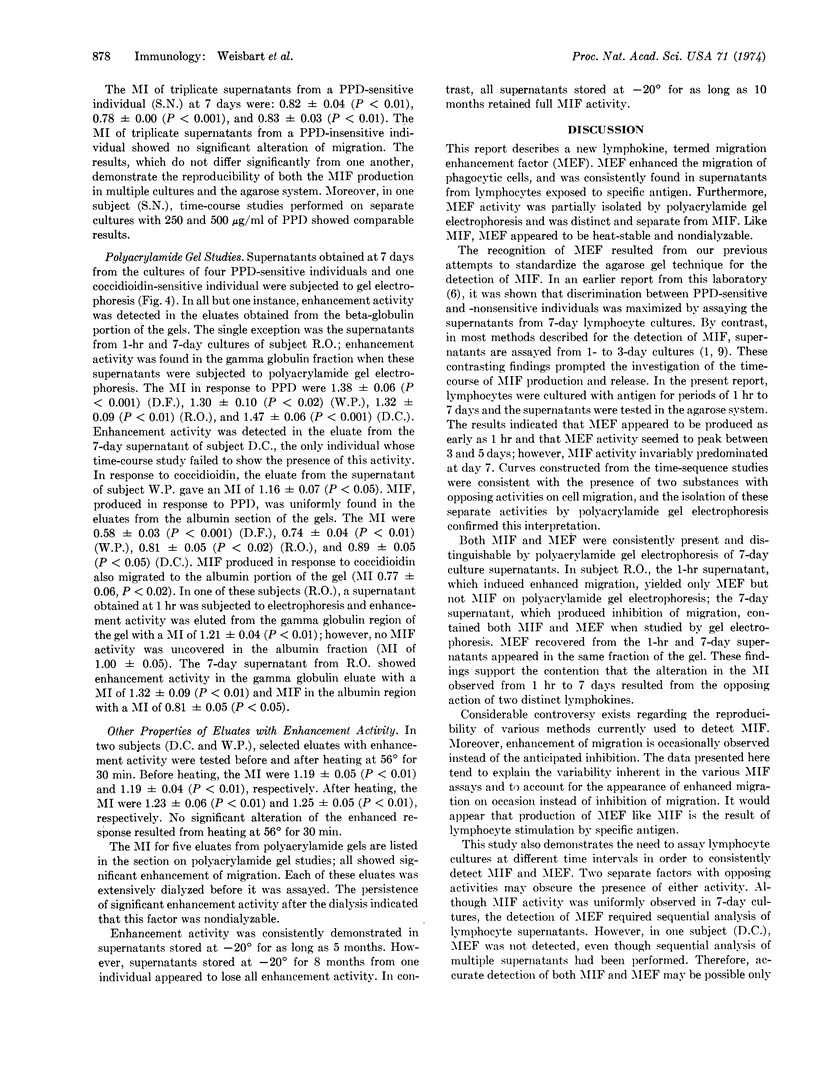
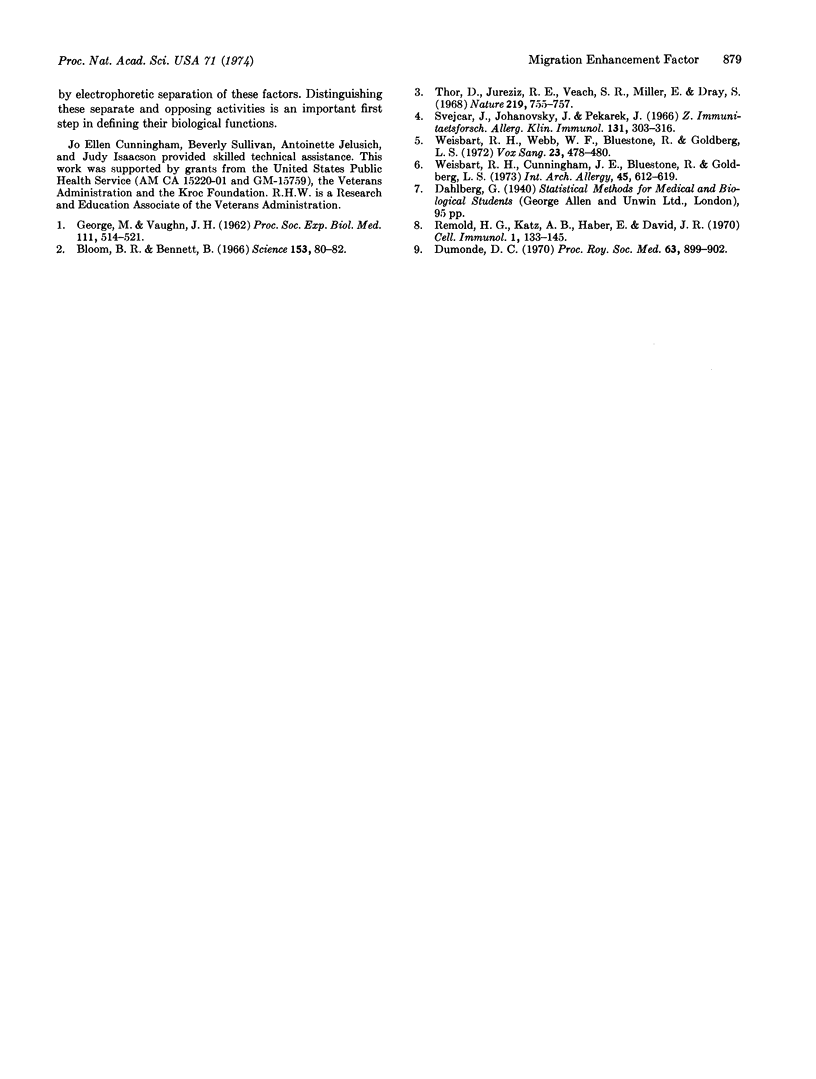
Images in this article
Selected References
These references are in PubMed. This may not be the complete list of references from this article.
- Bloom B. R., Bennett B. Mechanism of a reaction in vitro associated with delayed-type hypersensitivity. Science. 1966 Jul 1;153(3731):80–82. doi: 10.1126/science.153.3731.80. [DOI] [PubMed] [Google Scholar]
- Dumonde D. C. 'Lymphokines': molecular mediators of cellular immune responses in animals and man. Proc R Soc Med. 1970 Sep;63(9):899–902. [PMC free article] [PubMed] [Google Scholar]
- GEORGE M., VAUGHAN J. H. In vitro cell migration as a model for delayed hypersensitivity. Proc Soc Exp Biol Med. 1962 Nov;111:514–521. doi: 10.3181/00379727-111-27841. [DOI] [PubMed] [Google Scholar]
- Remold H. G., Katz A. B., Haber E., David J. R. Studies on migration inhibitory factor (MIF): recovery of MIF activity after purification by gel filtration and disc electrophoresis. Cell Immunol. 1970 May;1(1):133–145. doi: 10.1016/0008-8749(70)90066-3. [DOI] [PubMed] [Google Scholar]
- Thor D. E., Jureziz R. E., Veach S. R., Miller E., Dray S. Cell migration inhibition factor released by antigen from human peripheral lymphocytes. Nature. 1968 Aug 17;219(5155):755–757. doi: 10.1038/219755a0. [DOI] [PubMed] [Google Scholar]
- Weisbart R. H., Cunningham J. E., Bluestone R., Goldberg L. S. A modified agarose method for detection of migration inhibitory factor and delineation of its antigen dependency. Int Arch Allergy Appl Immunol. 1973;45(4):612–619. doi: 10.1159/000231104. [DOI] [PubMed] [Google Scholar]
- Weisbart R. H., Webb W. F., Bluestone R., Goldberg L. S. A simplified method for lymphocyte separation. Vox Sang. 1972;23(5):478–480. doi: 10.1111/j.1423-0410.1972.tb03841.x. [DOI] [PubMed] [Google Scholar]



